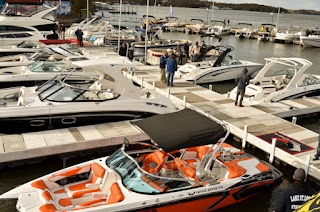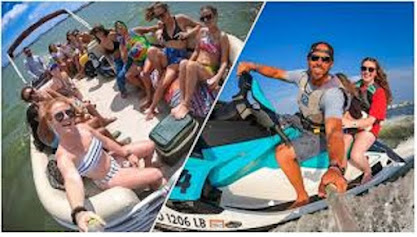Cold Water Kills Are You Next?
Uncontrolled or rapid breathing will speed up the chilling process. When the body's core temperature falls to 93?F. physical ability is severely diminished and mental capacity begins to deteriorate rapidly. A victim usually falls into an unconscious state when body temperature falls to 86?F. If the victim doesn't drown first, hypothermia will finish him off when the body temperature falls to or near 80?F. Survival figures show that an adult dressed in average clothing may remain conscious for one hour in water at 40F, and perhaps as long as 2 - 3 hours in 50F water. Remember, any movement in water accelerates body heat loss.
Avoid venturing out onto the cold wintry waters alone, because a buddy can save your life, or vice versa. If you find yourself in cold water, try to get back in or on your boat immediately. If the boat capsizes, do not leave the boat because the overturned boat is easier to spot than a single person in the water.
Have a safety Plan for re-boarding your vessel. A built-in transom ladder, swim platform, and lifting harness are examples of reboarding devices. Using the engine you can re board by climbing over the engine. important safety note; engine must not be running.
If you are not wearing thermal protection and you can't get out of the water, keep as still as possible. Fold your arms against your chest, cross your legs to reduce the amount of cooling surface. Rely on the buoyancy of your life jacket and float quietly until help arrives. If two or more people are in the water, huddle close together. Put your arms around each other to slow down heat loss. Stay together and stay still, letting your life jackets keep you afloat.
Planning for cold weather off-season boating is essential. Wear
clothing that will protect you in the event of cold-water immersion. Always
wear your personal flotation device. On land, conventional wisdom advises that
you wear layers of warm clothes. On the water this will not help you. The shore
side winter clothes will not be effective in retaining your body heat. You can
wear layers of clothing under or inside a waterproof shell. An effective
cold-water outer suit is a waterproof fabric with neoprene waterproof gaskets
at the wrists, neck, waist and ankles. Survival suits, like the Stearns and
Mustang types, are available from local boating equipment retailers or though
catalogs. You can also wear cold-water survival suits under your regular
clothes. These suits are worn by windsurfers and river paddlers and are similar
to a divers dry suit.
As you plan your trip you should
pack dry clothing in a waterproof bag. Make sure that your boat has adequate
bailing equipment. You may want to make provisions to facilitate re-entry into
your boat by having a boarding ladder or even a rope overside. Your life jacket
should have a sound producing device such as a whistle or horn and a reflective
device attached to it. Before you leave home check the weather forecast for the
day because a cold rain can soak you and bring on hypothermia almost as fast as
a dunking. Prepare a float plan and leave it with someone, or at least notify
someone where you are going and when you expect to be back. When you return let
them know you're back. Never go out alone. Using the buddy system is a proven
lifesaver. While you are out, observe the boats around you, their location and
proximity to your boat. On cold water, you have to depend on each other for
quick rescue in case of an accident. You know, you watch them and they watch
you and you help each other out.
Cold weather boating has its rewards for the prudent mariner. Following a few simple rules will help keep your safe, or at least increase your chances of returning home. Wear warm clothing. Wear a PFD at all times. Every year we read and hear about the 'experienced boaters' that die in cold weather boating accidents. Nearly every one of those missing mariners was not wearing a flotation device. File a float plan. Never go out alone. Check the weather before leaving home. While on the boat keep an eye on the weather and know when to quit and head for home. Even in cold weather, leaving the dock is optional, but returning is mandatory.
Photos courtesy of https://safeboatingcampaign.com/ safe boating campaign.



Comments
Post a Comment